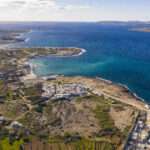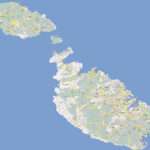L-Ahrax in Mellieħa is a serene natural escape with pine groves, rich history, and stunning views—just minutes from the beautiful Marfa Bay.
Category: Malta
All You Need to Know About Malta
Everything you need to know before visiting Malta—travel tips, top sights, beaches, and sea adventures with Bluewaves Watersports.
Grand Master Jean Parisot de Valette of Malta
Grand Master Jean de Valette led Malta to victory in the 1565 siege, founded Valletta & left a legacy symbolized by his sword, held in the Louvre.
World War II Pillboxes in Malta
Discover the history and role of Malta’s WWII pillboxes—concrete defenses built to protect the island during the Axis siege from 1940–1942.
The Great Siege of Malta
In 1565, Malta’s defenders withstood a massive Ottoman siege, shaping European history with courage, strategy, and an unforgettable victory.
The Grandmaster’s Palace in Malta
The Grandmaster’s Palace in Valletta, Malta, a historic seat of power rich in art, architecture, and centuries of Maltese heritage.
Mdina in Malta
Mdina, Malta’s Silent City — a timeless hilltop retreat of golden streets, noble history, epic views, and Game of Thrones filming locations.
Malta North Coastal Hikes
Explore Malta’s stunning north coast with scenic hikes, historic sites, and breathtaking Mediterranean views.
Top Things to Do in Malta
Things to Do in Malta & Gozo Make a Splash with Bluewaves Watersports From ancient temples and sun-drenched cities to crystal-clear lagoons and coastal adventures, Malta is a Mediterranean gem bursting with unforgettable experiences. Whether you’re exploring the historic streets of Valletta or diving into the vibrant blues off Comino, there’s no shortage of ways to make your trip extraordinary. But if you’re looking to turn your Malta visit into something truly exhilarating, nothing beats the thrill of the sea—jet skiing, parasailing, or cruising into hidden coves. That’s where Bluewaves Watersports comes in—offering the island’s top-rated aquatic adventures, based in the stunning northern bay of Mellieħa. Before we dive into the full list of top attractions, let’s talk about the experience that puts the wow in Malta: the sea, and how you can enjoy it like never before. Self Drive Boat Hire Indulge in the exhilaration and serenity of piloting your personal selfdrive speed boat. Rejuvenate your spirit as you rent a boat and navigate the calm waters, immersing yourself in a leisurely boat hire while beholding the captivating historical landmarks of the enchanting island of Comino (Blue Lagoon), Malta & Gozo. #1 – Bahri 2 MAX PERSONS 3.85m Max Weight: 160 Kg #2 – Ranieri 4 MAX PERSONS 4.55m Max Weight: 350 Kg #3 – Scorpion 6 MAX PERSONS 5.18m Max Weight: 500 Kg #4 – Rancraft 6 MAX PERSONS 5.00m Max Weight: 500 Kg #5 – Marino 6 MAX PERSONS 5.00m Max Weight: 500 Kg #6 – Rascala 7 MAX PERSONS 5.80m Max Weight: 580 Kg #7 – Fibra Fort 8 MAX PERSONS 6.17m Max Weight: 650 Kg #8 – Rib 8 MAX PERSONS 6.17m Max Weight: 650 Kg Check all Available Boats Private Boat Rides Start your private boat ride, complete with an expert skipper. Choosing a skippered boat ensures effortless navigation and the discovery of hidden gems in the region. Explore the stunning North Coast of Malta, the enchanting shores of Comino, or the picturesque South of Gozo, all guided by your knowledgeable skipper. Experience the breathtaking beauty of the Blue Lagoon, Crystal Lagoon, and hidden caves. Immerse yourself in the crystal-clear turquoise sea while snorkeling, and savor the thrill of a spectacular boat trip! Center console 5 MAX PERSONS 5.00m Bowrider 7 MAX PERSONS 6.17m Dinghy/Rib 10 MAX PERSONS 6.17m Jet Ski Rental The thrill of zooming across the clear, sparkling waters of Malta and Comino. Rent a Jet ski and feel the excitement of a high-speed ride, or slow it down to enjoy the views with younger passengers. Our jet ski rental gives you the freedom to explore Malta’s breathtaking natural surroundings, from hidden coves to crystal-blue lagoons nestled between Malta and Comino. Jet Ski drivers must be aged 18 and above. Passengers must be at least 8 years old and capable of securely holding onto the driver. Rent a Jet ski options Rent a Jet ski for 30mins – BOOK ONLINE Planning to Book Multiple Jet Skis?We have 10 jet skis available and are happy CONTINUE READING
Mellieha
Mellieha, Malta’s peaceful northern haven—rich in history, beaches, diving, watersports, and scenic views. A perfect escape from the busier towns.












